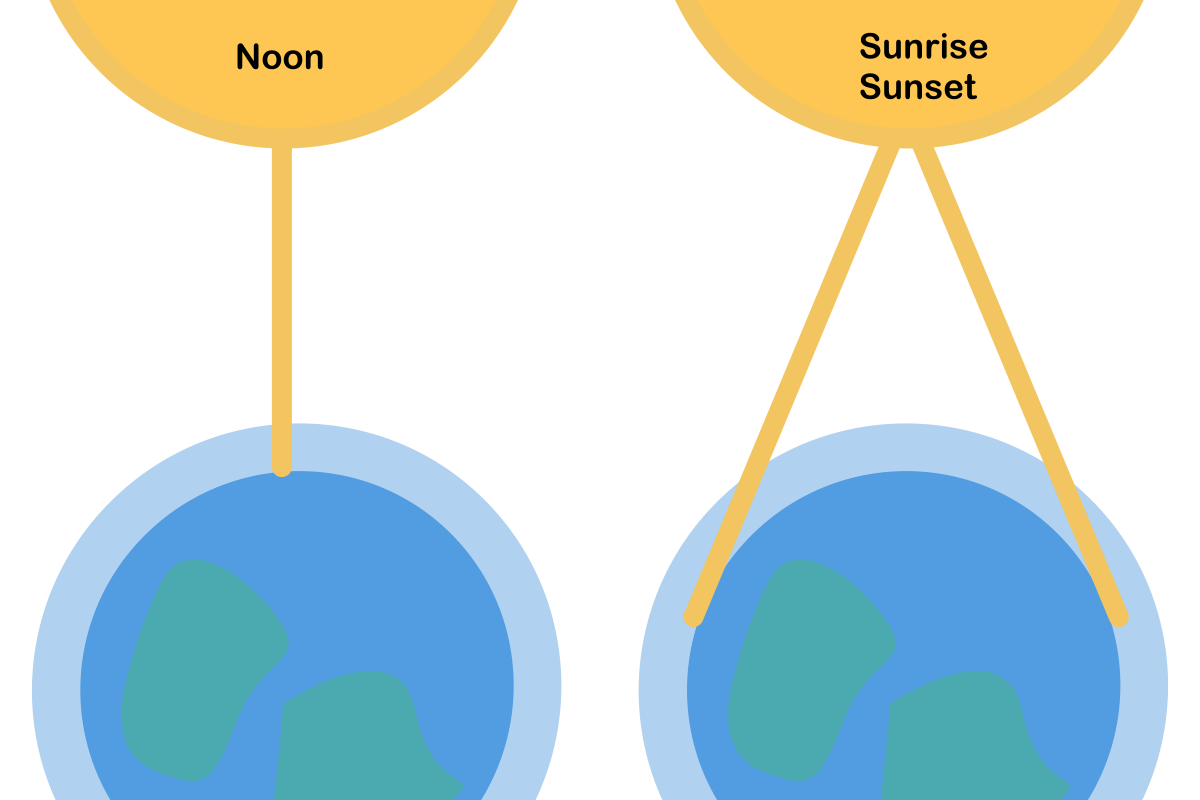Last Reviewed and Updated on July 7, 2022
If you observe the sun at sunset you will see it as more red or orange than yellow or white. Why is the Sun red at sunset? Let’s explore the scientific reason behind why the color of the sun appears red at sunset and sunrise and not at other times of the day (most of the time).

The color of the sun is always the same
Let’s first cover the basics. The color of the Sun itself doesn’t change. We may perceive it as different depending on numerous factors but the sun itself emits all colors of visible light and does so pretty evenly. We perceive this as white color. If you would be looking at the sun from space it would appear completely white.
Also read: fun facts about the Sun
Why is the Sun Red at Sunset?
When the sun sets (and rises), the light has to travel through more of the Earth’s atmosphere to reach us. The distance that the light needs to travel through the atmosphere at noon is roughly a quite a few times less than the distance the light travels through the atmosphere during the sunrise and sunset.

And as the sunlight passes through the atmosphere, some of the light is scattered away. This leaves more of the red and orange wavelengths reaching us and gives the Sun its characteristic sunset color.
So part of the answer has to do with the Sun’s position in the sky.
Why is the light scattered away?
A portion of the light scatters off molecules of gas as well as other small particles in the sky. The longer the path of the light the greater the chance the light scatters off of these particles.
The amount of these particles in the air will affect how much light gets scattered and in turn, will affect how we see the sun.
The clearer and less polluted the sky, the less scattering there will be.
Clouds and air pollution will increase the scattering. When the air is extremely polluted (smokes of wildfires) the sun can be red during other parts of the day as well.
Why do we see it as red and not another color?
This has to do with the wavelengths of different colors of light. Blue light is one that scatters the most as it travels in shorter waves. As blue color is one of the most scattered as the light travels through the atmosphere this is also the reason why we see the sky as blue. Why not violet, if violet has even shorter wavelengths? In very short, our eyes are more sensitive to blue than violet, but other factors play a role as well.

